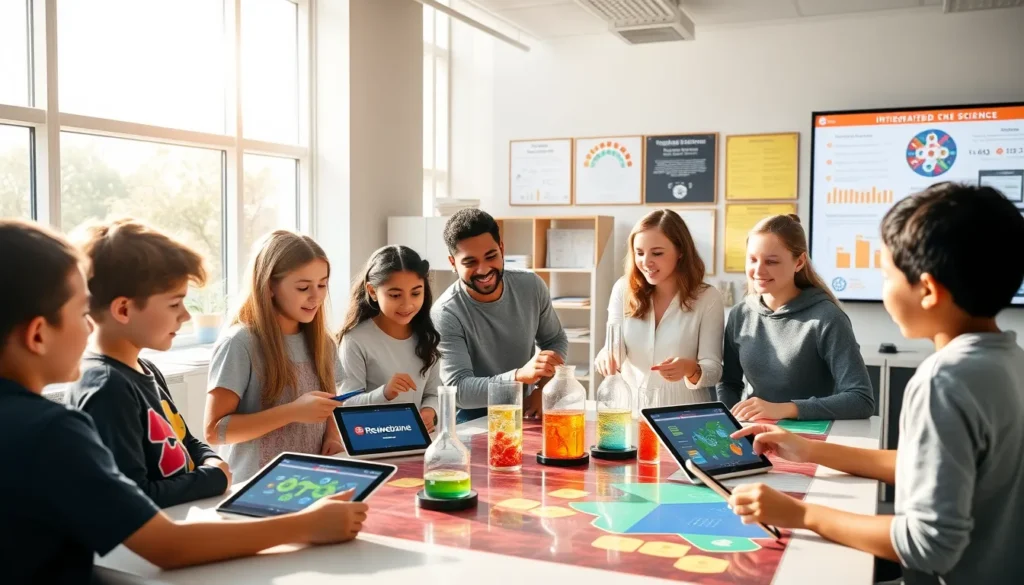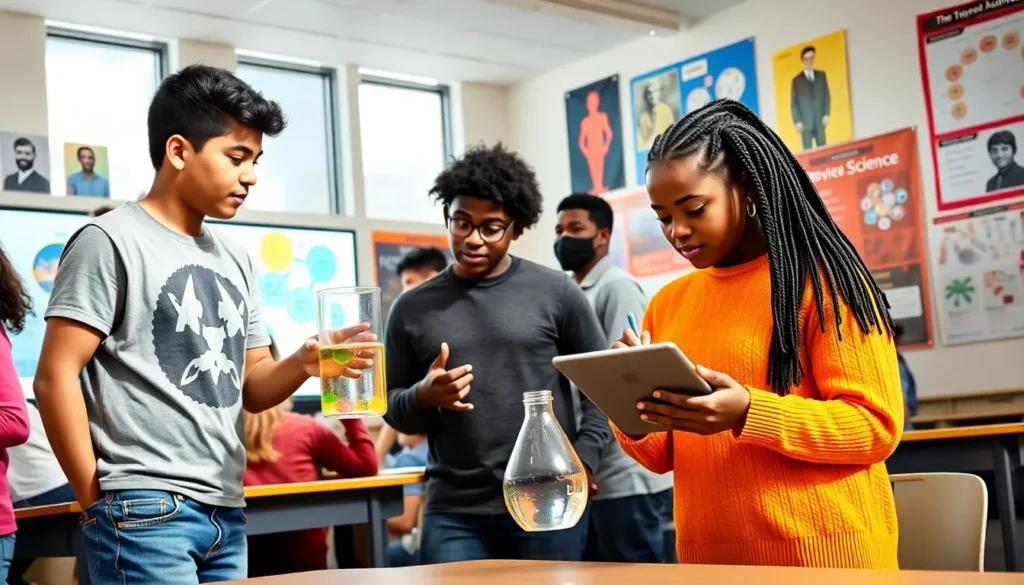Table of Contents
ToggleIn an increasingly interconnected world, the boundaries between scientific disciplines are blurring. Integrated science education promotes a holistic understanding of science, connecting knowledge from various fields to address real-world issues. One innovative platform at the forefront of this integration is Redwebzine. This article explores the potential of Redwebzine in fostering integrated science education, highlighting its role, benefits, challenges, and innovative approaches that can shape the future of science learning.
Understanding Integrated Science Education

Integrated science education is an approach that emphasizes the interconnectedness of scientific disciplines, such as biology, chemistry, physics, and earth science. Unlike traditional education that often compartmentalizes subjects, integrated science encourages students to explore topics that traverse multiple realms of science.
This method fosters critical thinking and problem-solving skills by challenging students to look at phenomena from various perspectives. By applying knowledge across disciplines, learners can better understand complex systems, which is especially important in tackling global challenges such as climate change and public health crises. The ultimate goal of integrated science education is to prepare students for a world where scientific literacy and interdisciplinary collaboration are essential.
The Role of Redwebzine in Education
Redwebzine, a digital platform aimed at enhancing science communication, plays a pivotal role in integrated science education. It serves as a bridge between complex scientific concepts and the audience, making science accessible and engaging. Through articles, videos, and interactive content, Redwebzine simplifies intricate ideas, allowing learners to grasp concepts in a relatable context.
Besides, the platform promotes collaboration among educators, scientists, and students, enabling the sharing of resources and best practices. Redwebzine emphasizes its commitment to fostering a community that values continuous learning and interdisciplinary connections. By providing tailored resources, it empowers educators to develop curricula that reflect the interconnected nature of science.
Benefits of Integrated Science Education
Integrated science education offers several significant benefits:
- Enhanced Critical Thinking: By engaging with multiple disciplines, students learn to analyze problems from different angles, fostering their ability to think critically.
- Real-World Applications: Integrated science education relates scientific theories to everyday life, making learning more relevant and stimulating for students.
- Collaboration Skills: This approach mirrors the collaborative nature of scientific inquiry, preparing students for real-world teamwork essential in scientific research and industry.
- Increased Engagement: By encouraging exploration and creativity, integrated science education cultivates a passion for learning, motivating students to investigate deeper into scientific fields.
- Adaptive Learning: Integrated curricula are flexible, allowing educators to tailor their teaching strategies based on the unique needs of their students.
Challenges in Implementing Integrated Science Curricula
While the potential benefits of integrated science education are clear, several challenges persist in its implementation:
- Curriculum Development: Designing an integrated curriculum requires extensive collaboration among educators and experts, which can be time-consuming and complex.
- Teacher Training: Not all educators are trained in integrated teaching methods, making professional development essential yet challenging to deliver consistently.
- Assessment Difficulties: Standardized tests often do not capture the multidimensional nature of integrated learning, leading to difficulties in evaluating student understanding.
- Resource Availability: Many schools struggle with limited resources to support innovative teaching methods, from technology to training materials.
- Cultural Resistance: Traditional educational frameworks may resist adopting new methodologies, making it necessary to demonstrate the value of integrated approaches convincingly.
Innovative Approaches for Redwebzine in Science Education
Redwebzine can carry out various innovative strategies to enhance integrated science education:
- Interactive Content: By incorporating virtual labs, simulations, and interactive infographics, Redwebzine can engage students actively in learning.
- Collaborative Projects: Initiatives that connect students from different disciplines to work on shared scientific problems encourage teamwork and integrated thinking.
- Community Engagement: Fostering partnerships with local businesses and research institutions can give students real-world contexts for their studies.
- Multimedia Resources: Utilizing podcasts, video interviews with scientists, and multimedia presentations can appeal to diverse learning styles, making science more engaging.
- Incorporating Current Events: By linking scientific content to current events and societal issues, Redwebzine can enhance relevance and urgency in students’ learning.
Case Studies: Successful Integrated Science Programs
Several programs and initiatives have successfully implemented integrated science education, showcasing its effectiveness:
- The STEM School: This institution emphasizes project-based learning across disciplines, resulting in improved critical thinking and academic performance among students.
- Project-Based Learning Workshops: Programs that provide educators with tools and strategies to integrate science into project-based learning have reported significant increases in student engagement and retention.
- Local Science Fairs: Integrating various disciplines in local science fairs has inspired students to think outside the box and develop innovative solutions to community challenges.
- Online Learning Platforms: Institutions that use online platforms like Redwebzine to supplement traditional education are seeing positive results in terms of accessibility and student interest.
Future Directions for Integrated Science and Redwebzine
As education continues to evolve, the future of integrated science, particularly through platforms like Redwebzine, looks promising:
- Increased Personalization: Leveraging data analytics to tailor educational experiences to individual learners will likely enhance student engagement and understanding.
- Global Collaboration: Connecting classrooms around the world can help cross-cultural scientific discussions, expanding students’ worldviews and collaborative experiences.
- Focus on Sustainability: Integrating sustainability concepts into the curriculum will become increasingly important as global challenges evolve.
- Utilization of AI and Technology: Advancements in technology and artificial intelligence can provide educators with innovative tools to enhance integrated science teaching.
Conclusion
The potential of Redwebzine integrated science education lies in its ability to connect scientific concepts across disciplines, making learning more relevant and engaging for students. By embracing collaborative efforts, innovative teaching methods, and real-world applications, Redwebzine can significantly contribute to shaping future generations of scientifically literate individuals. Addressing existing challenges and continuously adapting educational strategies will be essential to fully realize the benefits of integrated science education.







